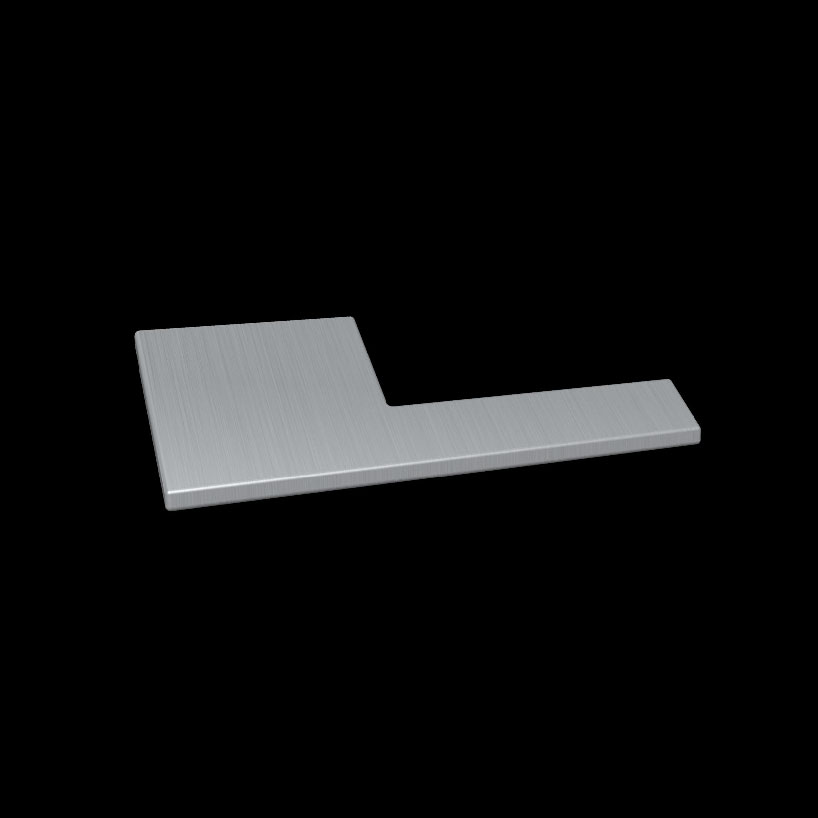
'element' handle david goss by david goss from australia
designer's own words:
working as an architect I have noticed that there are many many door lever designs however the plate or rose that sits against the door is always the same. these circular or square escutcheon plates seem to vary only in minor detail. i wanted to see if it was possible to reduce the handle to a single element, free of any joints or gaps between components. after studying the lever mechanism itself, how it attaches to the door & further internal components, i realised that the escutcheon or rose was often cosmetic, concealing the screws that attach the mechanism to the door. the 'element' handle extends from this point and becomes both lever and rose.
the handle is intended to read as a simple, flat plane folding out from the door surface. this is softened by a radius on all forward edges, picking up the light and creating a more gentle, tactile object. all edges against the door surface however, would be sharp (or with minimal radius) so as not to pick up light and emphasise the idea that the object folds out from the door. the front-most horizontal surface of the handle is vertical and not perpendicular to the top surface of the object. this allows the surface to pick up more light and emphasises the longest line of the handle.
the rectilinear form of the object is apparent when viewed front on, however as you move around the object it becomes more complex. a secondary, curved form appears, suggesting the circular, rotating movement of the handle. this also allows the handle to work with both round and square key escutcheon plates.
i have shown the 'element' handle in a brushed stainless steel finish however I think it would work equally well cast in brass with a warmer, nickel finish. the slight texture of these finishes would contrast with the bare, geometric shape and suggest a simple slab of 'material'. the handle may also work well with a chrome finish as the large flat surface area would create some interesting reflections. i did find however that this was hard to render and detracted from the form somewhat. in reality this may be different.
i would imagine that the slender profile of the handle would in reality have a heavy, weighty feel by nature of the more solid back part of the object. the only fixing mechanism visible is a small grub screw on the underside that attaches the handle to the standard internal mechanism. I acknowledge however that the design does require separate casting for left and right configurations.
‘element’ handle
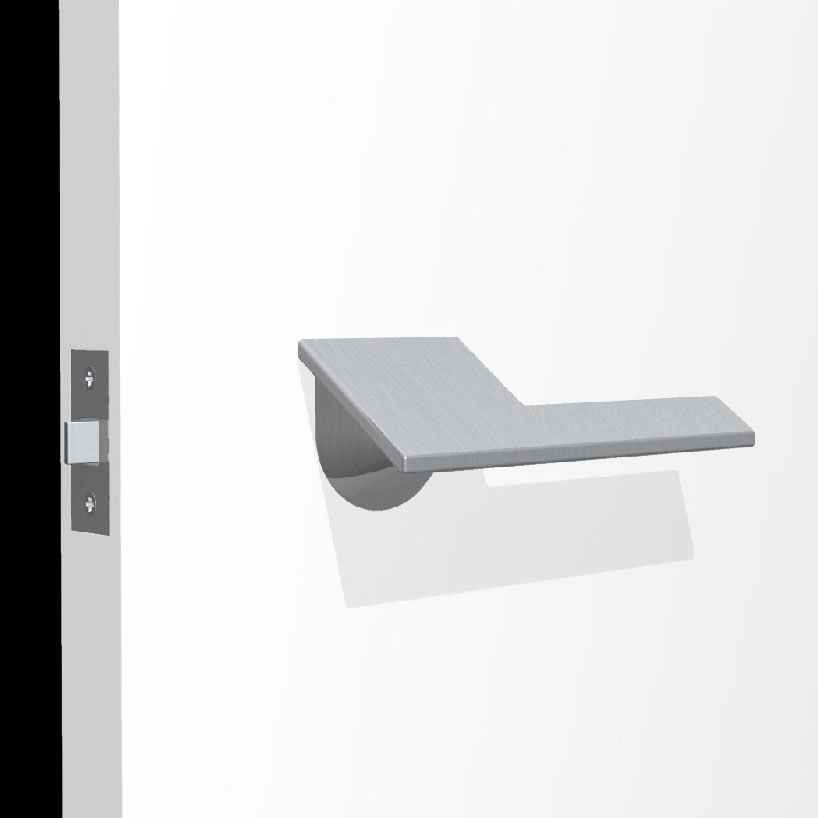 angle view from left
angle view from left
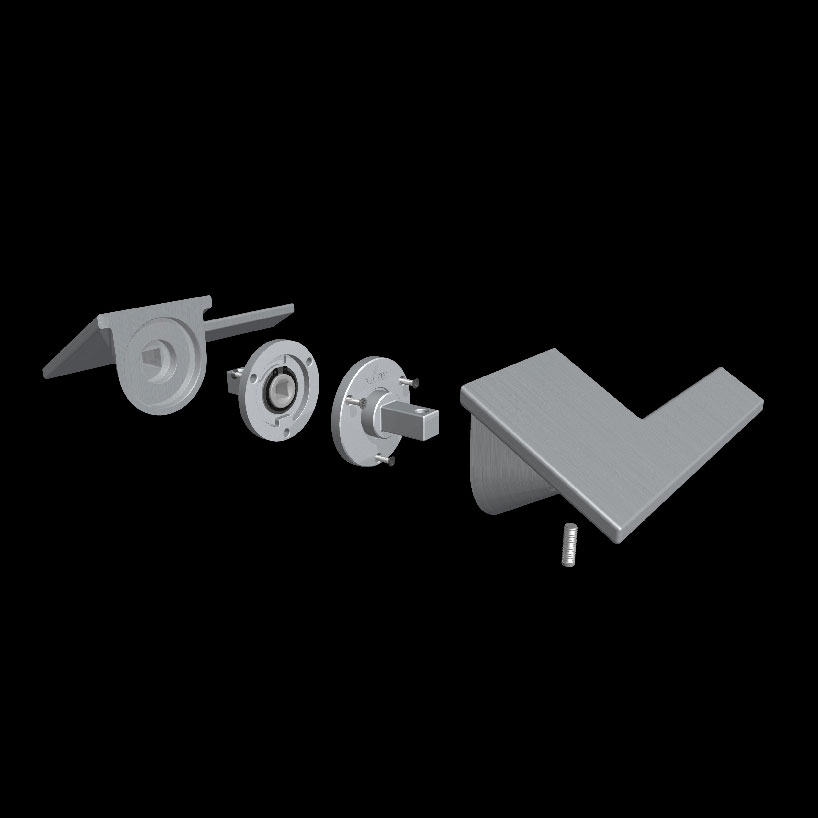 exploded view
exploded view
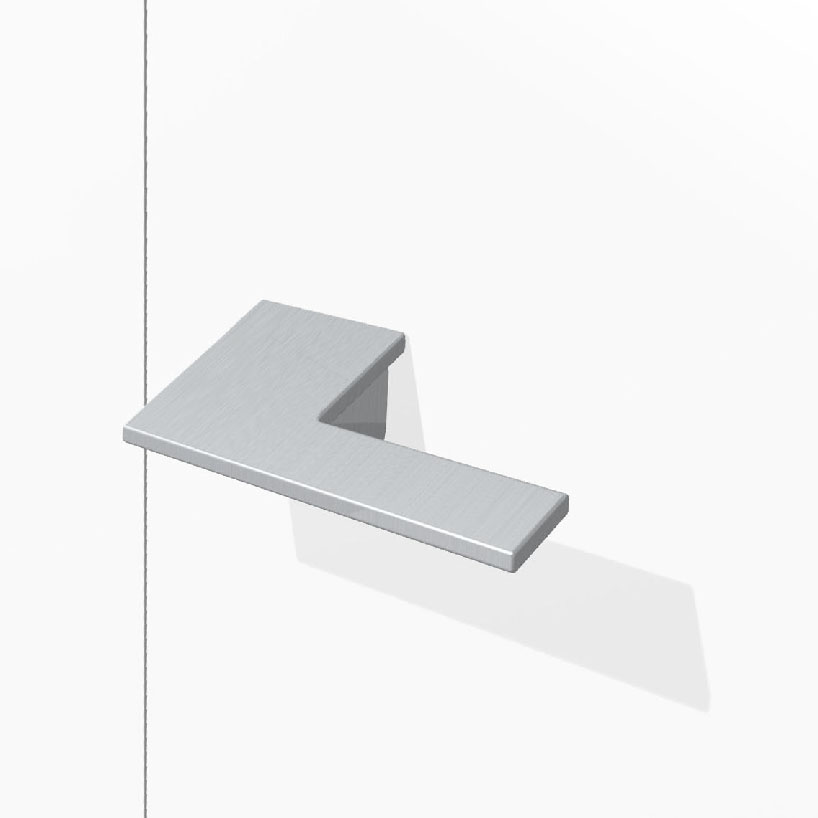 angle view from right
angle view from right
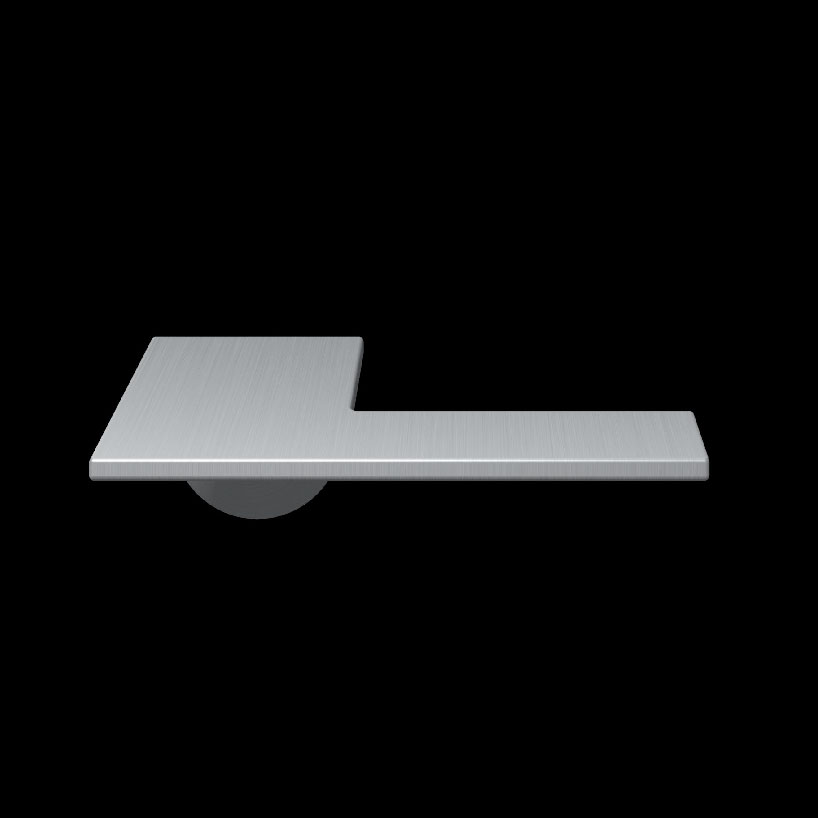 front view
front view
 dimensioned drawing
dimensioned drawing